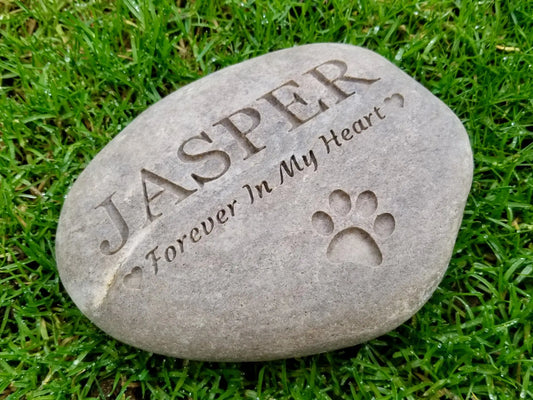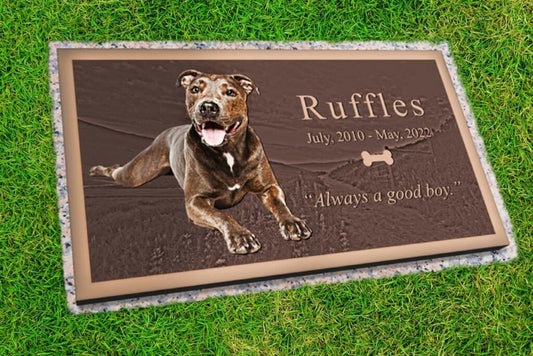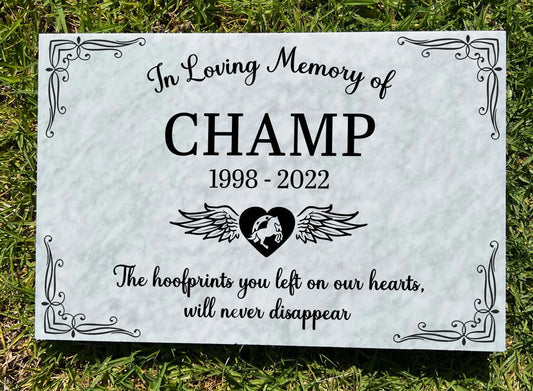Navigate pet cremation with clarity and confidence. This guide explains how pet cremation works, different service types, and what to expect, empowering grieving owners and industry professionals to make informed, compassionate decisions.
Guiding Pet Owners Through Cremation

Losing a beloved pet is a profound experience, often leaving owners navigating grief while making difficult decisions about their companion's final care. For businesses in the pet aftercare industry, from veterinarians and cremation providers to memorial product designers understanding the nuances of pet cremation is not just about process; it is about building trust, offering compassionate solutions, and strategically positioning services.
This guide cuts through complexity, offering clear considerations to enhance services, build client trust, and navigate the evolving pet aftercare landscape, ultimately helping businesses make faster, smarter decisions that resonate with grieving families.
How Pet Cremation Works
At its heart, pet cremation is a dignified process designed to reduce a pet's body to bone fragments, which are then processed into "cremains" or "ashes". While the outcome is similar, the methods vary significantly, each with distinct operational and ethical implications for a business.
The Two Paths: Flame-Based vs. Aquamation

Flame-Based Cremation: This is the most common method, involving the use of high heat (typically 1400 to 1800 degrees Fahrenheit) and natural gas within a specialized chamber called a retort. The intense heat reduces the organic matter to bone fragments. The process can take one to two hours for smaller animals, and longer for larger pets.

For businesses, it is important to recognize that flame cremation requires significant energy consumption and produces carbon emissions.
However, advancements are continually being made to reduce the environmental impact of these operations. This ongoing evolution in technology allows businesses to address growing environmental concerns while still providing a widely accepted service.
Aquamation (Water Cremation): Also known as alkaline hydrolysis or water cremation, this method is often presented as a more environmentally considerate alternative. It uses a gentle combination of temperature (around 200 degrees Fahrenheit), water flow, and alkalinity to break down organic remains, mimicking natural decomposition but at an accelerated rate. The process is slower than flame-based cremation, typically taking at least 20 hours.

This method offers a distinct strategic advantage. It uses less energy and produces fewer emissions compared to flame-based methods. This aligns with a growing consumer demand for eco-friendly and sustainable options in memorial products and services, driven by the increasing humanization of pets.
The Process Unpacked: From Intake to Return

Regardless of the method, the pet cremation process follows a general flow, emphasizing dignity and careful handling.
Preparation & Intake: The pet's body is carefully prepared, often including cleaning. Crucially, any desired memorial items like paw prints, fur clippings, or collars are collected before the cremation begins. Businesses should clearly communicate this to clients, as these keepsakes offer a tangible connection and immense comfort during grief. Proactively offering and integrating these keepsakes transforms a transaction into a relationship, enhancing the perceived value of the service and creating new revenue opportunities through personalized options.
Transfer to Chamber: The pet is gently transferred to the cremation chamber (retort). For flame cremation, the chamber is often pre-heated to the required temperature.
Cremation Process: For flame cremation, high temperatures reduce the body to bone fragments. The duration varies by pet size, typically 1-2 hours for small animals, and longer for larger ones. For aquamation, water, temperature, and alkalinity gently break down organic remains over a longer period, usually 19-20 hours.
Processing the Remains: After cooling (for flame cremation), the remaining bone fragments are collected and processed into a fine, sand-like consistency, often called "cremains" or "ashes". For aquamation, remains are collected, dried, and then processed into ash. The identification tag is verified again at this stage, and the tracking system is updated.
Return of Remains/Memorialization: For individual or partitioned cremations, the cremains are placed into an urn or complimentary container. A certificate of cremation, including the pet's name and unique ID, is often issued. The remains are then returned to the owner, often with a 7-10 business day turnaround for flame cremation, though aquamation may take longer (10-14 days).
Memorialization and Healing

The physical act of cremation is just one part of the journey. Memorialization plays a crucial role in the grieving process.
- Choosing a Memorial: From custom urns (wood, ceramic, metal, biodegradable) that reflect your pet's personality, to cremation jewelry that keeps them close, and garden markers that create a lasting tribute, the options are vast. Consider what brings you comfort and best honors your pet's memory.
- Decision Insight for Owners: Focus on what will provide lasting comfort and a meaningful way to remember your pet. Don't rush this decision; consider options like a small urn for home, a piece of jewelry, or a marker in a special garden spot.
- Creating Rituals: Whether it's a private scattering ceremony, planting a memorial tree with biodegradable ashes, or simply creating a dedicated "memory corner" in your home, rituals help acknowledge the loss and facilitate healing.
- Decision Insight for All: Encourage clients to create personal rituals that help them process grief. There's no right or wrong way to mourn.
Frequently Asked Questions About Pet Cremation
Here are answers to common questions and misconceptions, designed to help clarify your options.
Q1: Will I really get my pet's ashes back?
A: Yes, with private and partitioned/semi-private cremation, you are guaranteed to receive your pet's ashes. Reputable crematories employ stringent identification and tracking systems to ensure accuracy.
Q2: Is pet cremation an expensive choice?
A: Costs vary depending on your pet's size, the type of cremation service chosen (private being the most expensive, communal the least), and additional memorial products. It's often comparable to or less expensive than burial. It's an investment in dignified farewell.
Q3: Does cremation feel cold or unfeeling?
A: This is a deeply personal choice. Many find comfort in cremation as it allows them to keep their pet's remains close, scatter them in a meaningful place, or integrate them into a lasting memorial. It offers flexibility in grieving.
Q4: Are all pet crematories the same?
A: Absolutely not. Standards, ethics, and practices can vary significantly. Look for facilities that are transparent about their process, offer tours, and are members of or certified by industry organizations like the IAOPCC or CANA.
Q5: Is aquamation better for the environment?
A: Aquamation generally has a lower environmental impact than flame cremation, using less energy and producing no harmful emissions. If environmental considerations are a priority, it's a strong option to explore.




